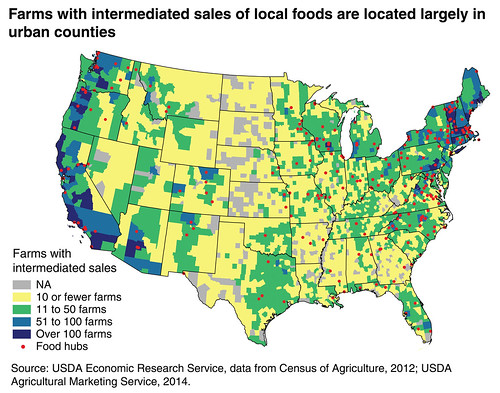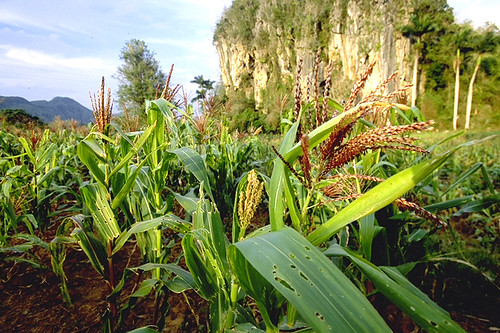USDA scientists work 365 days to provide safe and sustainable food, water, and natural resources in the face of a changing climate and uncertain energy sources. To recognize the contribution that agricultural science and research makes in our daily lives, this week’s “Banner Year” series features stories from 2015 that show the successes that USDA science and statistical agencies made for us all.
Information on economic, demographic, and social developments in rural America, as well as on current and emerging opportunities for farmers is important to policy makers and other stakeholders. USDA’s Economic Research Service this year tracked and analyzed trends in rural areas, particularly employment and population. For farmers, key opportunities include new and evolving trade relations, notably the potential for trade with Cuba and the emergence of China as a major importer. Both were on ERS’s research agenda this year, as was an evolving opportunity on the domestic front – the growth in sales of locally sourced farm products.
Let’s review 5 ERS reports featured in 2015:
1. Local Food Systems: What Do We Know About National Trends?
American consumers are enjoying increasingly more opportunities to buy food directly from farmers and to patronize grocery stores and restaurants that offer local foods. ERS’s Trends in U.S. Local and Regional Food Systems: Report to Congress – details the latest economic information on local food producers and consumers, and reviews policies supporting local food systems.

2. China Emerging as a Key Market for Agricultural Products
China is often noted for its dominant export presence in the world market. But in recent years, China’s potential as a significant market has drawn increasing attention. A new Economic Research Service (ERS) report examines China’s emergence as a major importer of agricultural products over the past decade. The United States has become a particularly important supplier of agricultural products to China.

3. U.S.-Cuba Trade Relationship: Past, Present, and Possible Future
Since December 2014, when the United States and Cuba announced the intention to restore diplomatic ties, the U.S. has taken steps to ease restrictions on trade, remittances, and travel to Cuba. A recent report by the Economic Research Service (ERS) considers potential impacts of more normal commercial ties between the two countries on bilateral agricultural trade. A more normal trade relationship would lead to an increase in U.S. agricultural exports to Cuba through several channels.

4. Moving Back to Rural America: Why Some Return Home and What Difference It Makes
Stemming rural population loss–and spurring economic development–may depend less on retaining young adults after high school and more on attracting former residents some years later. Researchers at the University of Montana and USDA’s Economic Research Service visited 21 rural communities during 2008 and 2009 and conducted 300 interviews at high school reunions. The aim was to better understand what motivates return migration and the barriers to such moves.

5. Rural America in the Post-Recession Years
USDA’s Economic Research Service has provided a snapshot of the rural economy in a report entitled Rural America at a Glance. The past year witnessed some encouraging trends, as rural employment grew during the year ending in second-quarter 2015, following several years of stagnation. Rural areas on the whole are still experiencing population loss, although rural counties that are concentrated in scenic areas or in energy boom regions are exceptions, illustrating the diversity of rural America.

